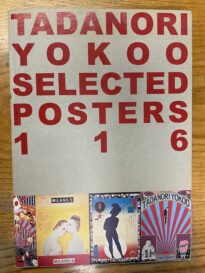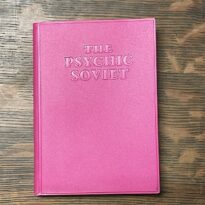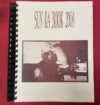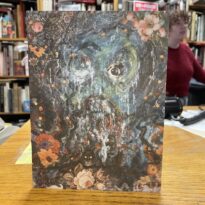
Ian Hamilton Finlay: A Sailors Calendar (something else press)
17 pp., lovely silkscreened book, with interleaving pages, edition of 1000 copies, ringbound, a beautiful artist book, very fine as issued, a rare and unusual something else press book. Loosely bound by three individual rings, the hole punched pages of this book are screen printed in three muted colors with illustrations of ships and nautical puns both visual and verbal.
Something Else Press, 1971 VF copy may have some light rust stains around rings which is usual with this title.
The art of Ian Hamilton Finlay is unusual for encompassing a variety of different media and discourses. Poetry, philosophy, history, gardening and landscape design are among the genres of expression through which his work moves, and his activities have assumed concrete form in cards, books, prints, inscribed stone or wood sculptures, room installations and fully realised garden environments.
Common to all of Finlay’s diverse production is the inscription of language – words, invented or borrowed phrases and other semiotic devices – onto real objects and thus into the world. That language inhabits, for Finlay, a material or real dimension gives rise to the two seemingly opposed but signal characteristics of his work.
On the one hand, Finlay, beginning with with his early experiments with concrete poetry, has always been acutely sensitive to the formalist concerns (colour, shape, scale, texture, composition) of literary and artistic modernism. On the other hand, Finlay, a committed poet and student of classical philosophy, has also always recognised the power of language and art to shape our perceptions of the world and even to incite us to action. Fused in his work is thus a certain formalist purity and an insistent polemical edge, “the terse economy of concrete poetry and the elegant [and speaking] simplicity of the classical inscription.” Formalist devices are themselves shown to be never without meaning, and they are ingeniously deployed by Finlay to arm his works with an ever more evocative content.
The movement of words and language into the world has been most fully realised by Finlay in his now famous garden, Little Sparta, set in the windswept Pentland Hills of southern Scotland. Begun in 1966 when Finlay relocated with his family to the site, an abandoned farm, Little Sparta is a deliberate correction of the modern sculpture garden through its maker’s revisiting the Neoclassical tradition of the garden as a place provocative of poetic, philosophic and even political thought. —Ian Hamilton Finlay.com
$ 350.00




